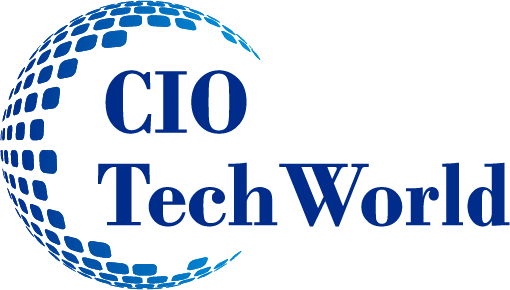The emergence of generative AI (Gen AI) has revolutionized the way organizations operate, offering unprecedented opportunities for innovation and efficiency. However, with these advancements come significant security challenges that must be addressed to protect sensitive data and maintain organizational integrity. This article explores the importance of aligning Gen AI policies with data classification policies, educating employees on the value and risks associated with Gen AI, establishing robust governance frameworks to mitigate potential risks, and the importance of Zero Trust in the age of AI.
Aligning Gen AI Policies with Data Classification Policies
One of the fundamental steps in ensuring the security of Gen AI tools is to align them with your organization’s data classification policy. Data classification policies categorize data based on its sensitivity and the level of protection it requires. By integrating Gen AI policies with these classifications, organizations can ensure that sensitive data is handled appropriately and securely.
For instance, if your data classification policy identifies certain data as highly confidential, any Gen AI tool that processes this data must adhere to stringent security measures. This includes encryption, access controls, and not leveraging your data in their training models. By developing proper policies, organizations can minimize the risk associated with unauthorized access, safeguarding their most valuable information. Similarly, if your data classification policy identifies public data, that might be fine to use in an open Gen AI system; but any other data should only be used in approved, closed Gen AI tools.
By aligning Gen AI policies with data classification policies, educating employees on the value and risks of Gen AI, and establishing robust governance frameworks, organizations can harness the power of AI safely – Patty Patria
Educating Employees on the Value and Risks of Gen AI
As Gen AI tools become more accessible, it is crucial to educate employees on both the benefits and risks associated with their use. While these tools can enhance productivity and drive innovation, they also pose significant risks, particularly in terms of data leakage and misuse.
Employees must understand the value of Gen AI in improving workflows and decision-making processes. However, they should also be aware of the potential risks, such as the inadvertent exposure of confidential information. Training programs should emphasize the importance of data privacy and security, teaching employees how to use Gen AI tools responsibly and securely.
Governance for AI: Assessing and Addressing Risks
Establishing a governance framework for AI is essential to assess and address the risks associated with Gen AI tools. This framework should include policies and procedures for evaluating the security and ethical implications of AI applications. It should also define roles and responsibilities for monitoring and managing AI-related risks.
A key aspect of AI governance is the implementation of best practices for reviewing and vetting Gen AI tools as well as the new applications that your end users might create with Gen AI. This involves adding specific Gen AI questions to your normal security vetting process and conducting assessments to identify potential vulnerabilities and ensure that the tools comply with organizational policies. Additionally, organizations should establish an approval process with checks and balances to prevent unauthorized deployment of AI applications.
The Rise of Low-Code/No-Code Gen AI Tools
The advent of low-code/no-code Gen AI tools has democratized AI development, enabling end users without programming skills to create sophisticated applications. While this fosters innovation, it also introduces new security challenges. Organizations must ensure that these tools are used in a secure manner, particularly when handling sensitive data.
Best practices for using low-code/no-code Gen AI tools include a formal approval process for moving new tools to production, conducting regular security audits, and providing training on secure development practices. By doing so, organizations can mitigate the risks associated with these tools while leveraging their potential for innovation.
Addressing External Risks: Invoice Fraud, Deepfakes, and More
In addition to internal risks, organizations must also be vigilant about external threats posed by Gen AI. These include invoice fraud, deepfakes, enhanced phishing attempts, and malicious language models (LLMs) on the dark web. Educating employees about these threats is crucial to prevent falling victim to sophisticated cyberattacks.
Training programs should cover the latest tactics used by cybercriminals and provide practical advice on how to recognize and respond to these threats. By fostering a culture of security awareness, organizations can better protect themselves against external risks.
AI and the Need for Zero Trust
In the age of Gen AI, setting up zero trust architectures has become increasingly important for organizations to ensure information security. Unlike traditional security models that operate on the assumption that everything inside an organization’s network can be trusted, zero trust models assume that threats can come from both outside and inside the network. This approach involves continuously verifying every request as though it originates from an open network, minimizing the risk of unauthorized access to sensitive data. By adopting zero trust principles, organizations can enhance their security posture by employing stringent verification processes, micro-segmentation, and real-time monitoring to detect and respond to potential threats more effectively. This robust security framework is essential in protecting against the sophisticated and evolving threats posed by the misuse of Gen AI technologies.
Conclusion
The emergence of generative AI presents both opportunities and challenges for organizations. By aligning Gen AI policies with data classification policies, educating employees on the value and risks of Gen AI, and establishing robust governance frameworks, organizations can harness the power of AI while safeguarding their sensitive data. Additionally, addressing the external risks associated with Gen AI is essential to protect against sophisticated cyber threats. With the right strategies in place, organizations can navigate the complexities of Gen AI and drive innovation securely.
Explore AI Magazine here.
Read more stories:
Patty Patria: A History Graduate’s Rise to Babson College CIO

I serve as the CIO at Babson College, where I oversee all aspects of the university’s technology, including research, teaching, security, applications, and operations. As a change leader, I value being an effective communicator and active listener. I consider myself an innovative, optimistic, and strategic thinker who is results-oriented and deeply committed to excellence. With over 20 years of leadership experience, I’ve had the privilege of working with faculty, students, and staff to implement solutions that transform the way we work and learn.
I hold a Master of Business Administration from Suffolk University and am a certified Project Management Professional (PMP), Certified Information Systems Security Professional (CISSP), and Prosci Certified Change Management Professional.








